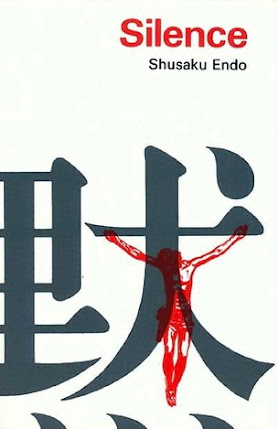When Does "Silence" (1966) Take Place?
"Chinmoku" (released to English-speaking audiences as "Silence") is a historical fiction novel written by Endō Shūsaku that released January 1st, 1966. So when is "Silence" set?
 It takes place in the years:
It takes place in the years:
We know this because the novel is partially epistolary and the dates are mentioned.

1639 AD - 1643 AD
We know this because the novel is partially epistolary and the dates are mentioned.
“Chapter 2” through “Chapter 4” are letters from Father Sebastian Rodrigues (based on the real-world Jesuit priest Giuseppe di Chiara: 1602-1685) that trace 1639 AD into 1640 AD. (The real-world di Chiara actually arrived in Japan in 1643 AD.) So the beginning of the main action of the book is in 1639 AD. (Or 1643 AD if you're sticking to historical facts...)
“Chapter 5” through “Chapter 9” are not in the form of letters and are, therefore, not dated. The events of the story's ending in "Chapter 9" are later described during an epilogue thus, “he was first placed under charge of Inoue Chikugonokami in the Year of the Ram thirty odd years ago”. This part of the epilogue is an excerpt of a report dated for 1681 AD. That would put the ending in 1643 AD, (the only Year of the Ram between 1640 AD and 1651 AD) at the conclusion of the narrative. This year is recorded in the Chinese Zodiac calendar, in which the 12 months of the year correspond to symbolic animals and form the basis of a parallel ongoing 12-year cycle. So the story's main action spans 1639 AD to 1643 AD.
1681 - 30 = 1651
and
1681 - 40 = 1641
but
the only Year of the Ram in between is 1643 AD.
The “Prologue” (in which characters read the first letter by Father Ferreira) covers 1637 AD through various specific dates in 1638 AD and then into 1639 AD, when Father Rodrigues arrives in the port city of Macao. "Chapter 1" is a letter from Father Rodrigues that dates their arrival in Macao to May, clearly marking the end of the "Prologue" as being in 1639 AD.
The first letter in the novel is written by the real-world Jesuit priest Father Cristóvão Ferreira and dated "March 22nd 1632”. The letter from 1632 AD and news of events in 1633 AD reach the main characters but this is all before the main action of the story starts.
The first epilogue to the narrative is “Chapter 10”, mostly made up of short diary entries of a Dutch trading clerk named Jonassen writing in 1644 AD, 1645 AD, and 1646 AD.
Finally, an "Appendix" secondary epilogue closes the book by presenting reports from an unnamed “OFFICER AT THE CHRISTIAN RESIDENCE” overseeing Rodrigues many years later in “The Twelfth Year of Kanbun” or 1671 AD, "The Second Year of Enpō" or 1674 AD, "The Fourth Year of Enpō" or 1676 AD, and, finally, "The Ninth Year ofEnpō" [sic] or 1681 AD. These years are recorded in the Japanese eras calendar, in which each era was (in the early years) named by court officials and then (in later years) named after the current reigning emperor.
(The real di Chiara, the basis for the fictional Rodrigues, died in August of 1685 AD.)

